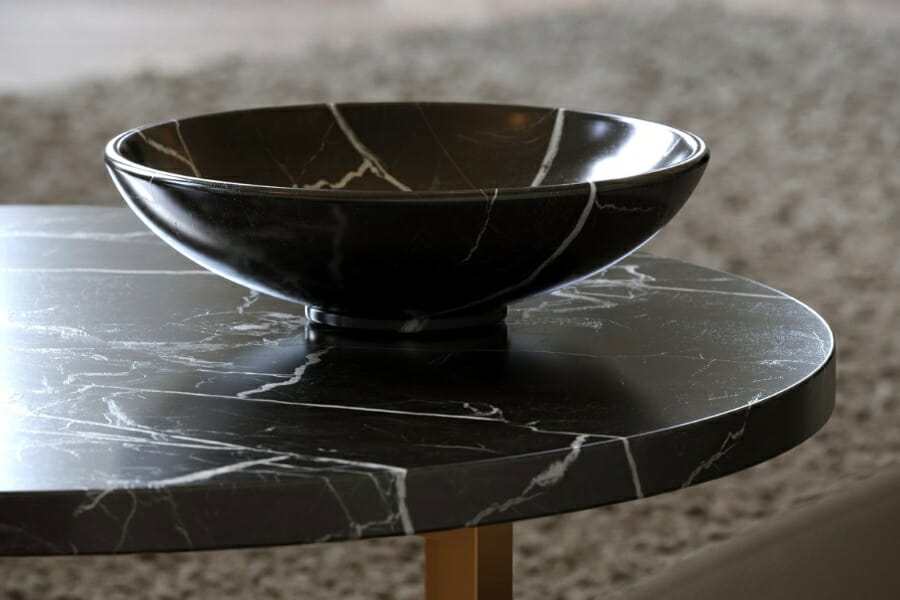Highly prized for its beauty and durability for centuries, the name Marble alone conjures images of grandeur and luxury. With its stunning veining patterns and a range of colors, it’s been used in everything— from ancient statues to modern-day interior design.
As an all-time symbol of wealth and sophistication, Marble has been used in some of the world’s most iconic structures, such as the Taj Mahal and the Parthenon. Its timeless beauty and elegance make it a popular choice for high-end homes, hotels, and other luxurious spaces.
But this stone isn’t just a pretty face; it’s also incredibly strong and durable. Read on to discover more about Marble’s value and understand why it can command a hefty price.
What Marble Is
As a natural stone, Marble is formed from limestone that has been subjected to intense heat and pressure within the earth’s crust. This process causes the limestone to recrystallize, resulting in a new rock that is harder, denser, and more durable than its predecessor.
The primary component of Marble is Calcium Carbonate, which gives it a characteristic white or light-colored appearance, although it can also be found in a range of other colors, such as black, green, pink, and gray.
Since Marble is a natural and organic material, each piece is unique with its own characteristics and personality. It’s a material that has stood the test of time and continues to be valued for its beauty, durability, and versatility in design. And its price and value depends on the following types:
Calacatta
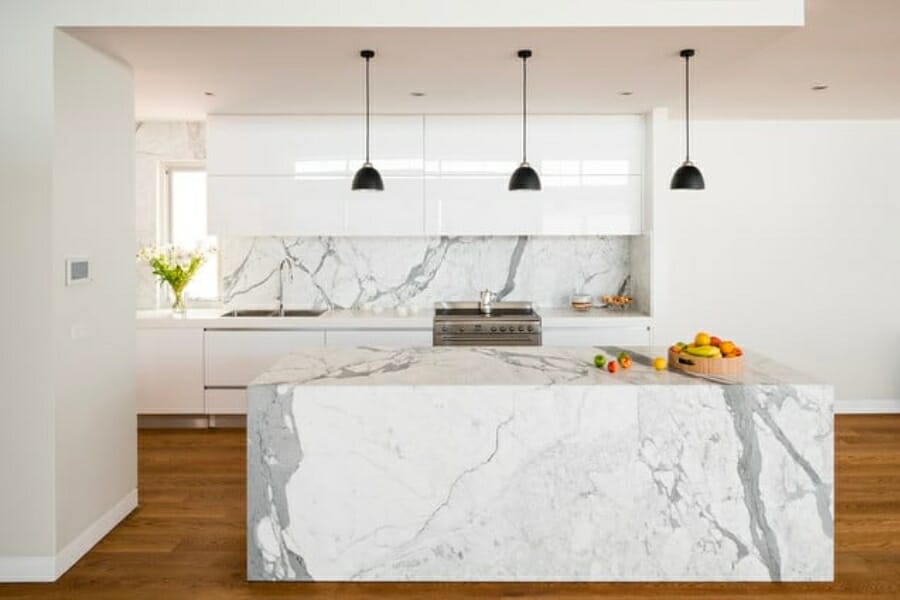
Calacatta Marble is considered the high-end and most luxurious type. It’s quarried solely in the Carrara region of Italy.
This type is prized for its bright white background color, which is contrasted by dramatic, bold veining that can range from gray to gold in color. The veining patterns in Calacatta are often dramatic and bold, with thicker, more pronounced veins than other types of Marble.
Because of its captivating look, Calacatta is often used in luxury settings, such as high-end homes, hotels, and other high-traffic areas. It’s also a popular choice for kitchen countertops and backsplashes due to its durability and resistance to heat and staining.
How much is Calacatta worth
Since it’s the high-end type, Calacatta is also the most expensive among Marbles. It sells at the whooping price of $180 to $270 per square meter.
Carrara
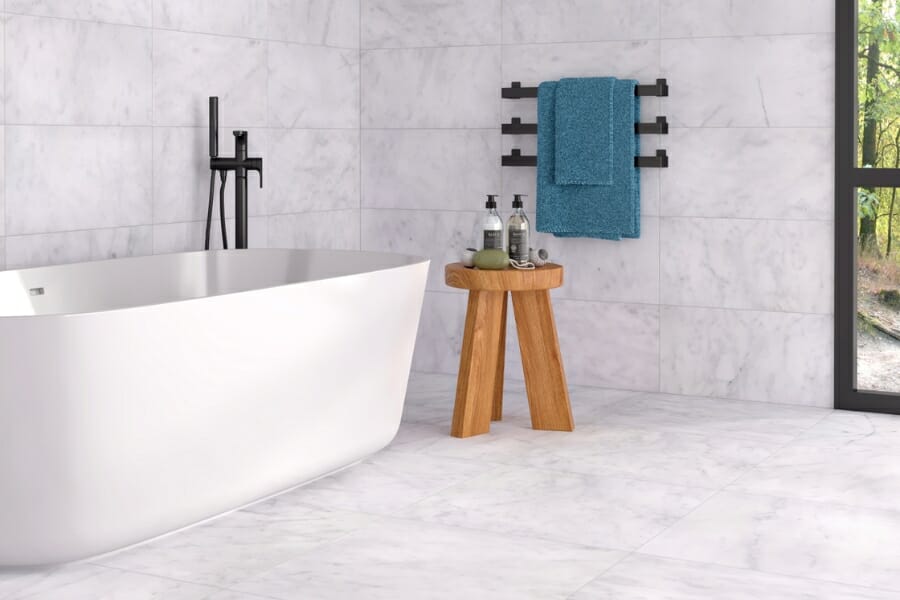
Carrara Marble is quarried in the Carrara region of Tuscany, Italy. As the most well-known type of Marble in the world, Carrara has been prized for its beauty and durability for centuries.
This type is characterized by its grayish-white background color, which is punctuated by fine, delicate veining. The veins can range in color from gray to blue to gold, depending on the particular quarry and location where exactly it was extracted.
Like the Calacatta type, Carrara has been used in a wide range of applications throughout history, including sculpture, architecture, and decorative accents. With proper care and maintenance, Carrara can last for decades, making it a popular choice for flooring, countertops, and backsplashes.
How much is Carrara worth
Carrara is the most common type of Marble, so its price is also the lowest at $65 to $105 per square meter.
Crema Marfil
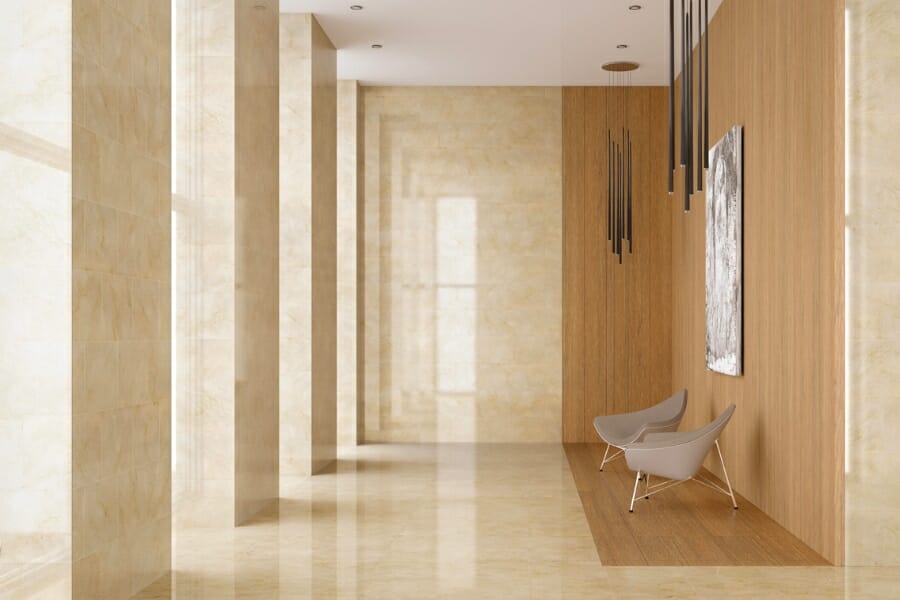
Known for its creamy beige color and warm, earthy tones, Crema Marfil Marble is quarried primarily in the southeastern region of Spain.
It’s characterized by its uniform color and subtle, flowing veining. The veins are typically light brown or gray in color and are often described as having a “feathery” or “cloud-like” appearance. Valued for its versatility, it’s used in a wide range of applications, including flooring, countertops, backsplashes, and decorative accents.
One of the benefits of Crema Marfil is that it is relatively easy to work with and can be cut and shaped into a variety of sizes and shapes. It’s also a durable and long-lasting material that can withstand heavy use and is resistant to heat and staining.
How much is Crema Marfil worth
Crema Marfil’s price is considered in the mid-range compared to other types. Currently, it’s being sold at $97 to $147 per square meter.
Emperador
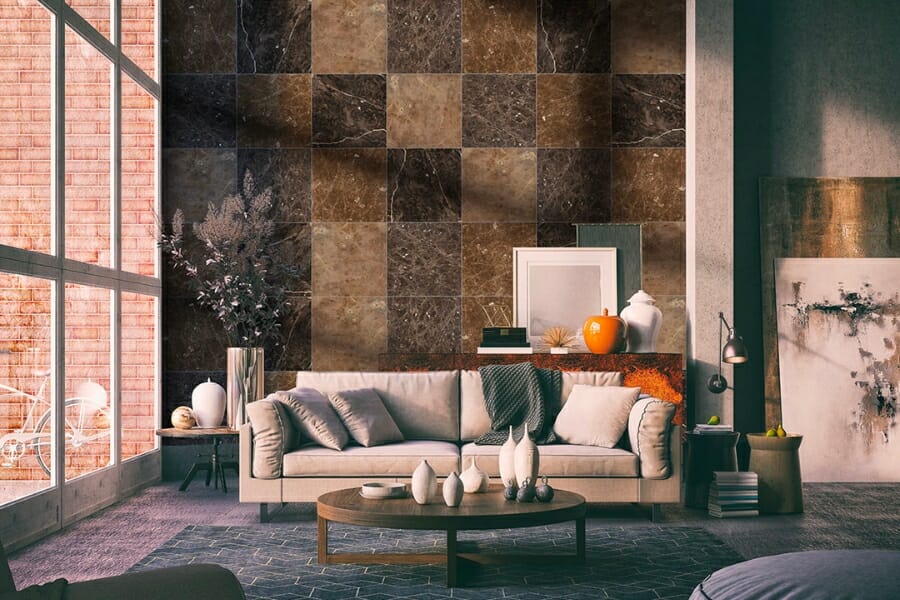
Quarried primarily in Spain, Emperador Marble is known for its rich, warm tones and unique veining patterns. It comes in a range of colors, including light and dark variations.
Light Emperador is characterized by its light brown or beige color and subtle, flowing veining. It’s often used as a neutral background color in a variety of design styles, from traditional to modern.
Dark Emperador, on the other hand, is characterized by its deep, chocolate brown color and bold, dramatic veining. A popular choice for adding a touch of luxury and sophistication to a space, it’s often used in high-end residential and commercial applications.
Both light and dark Emperador are prized for their durability and resistance to heat and staining, making them practical choices for high-traffic areas like kitchens and bathrooms. They also have a timeless beauty that can add warmth and elegance to any space.
How much is Emperador worth
Light Emperador Marble’s price go from $93 to $140 per square meter, while Dark Emperador Marble’s price is comparatively set a bit higher at $113 to $169 per square meter.
Nero Marquina
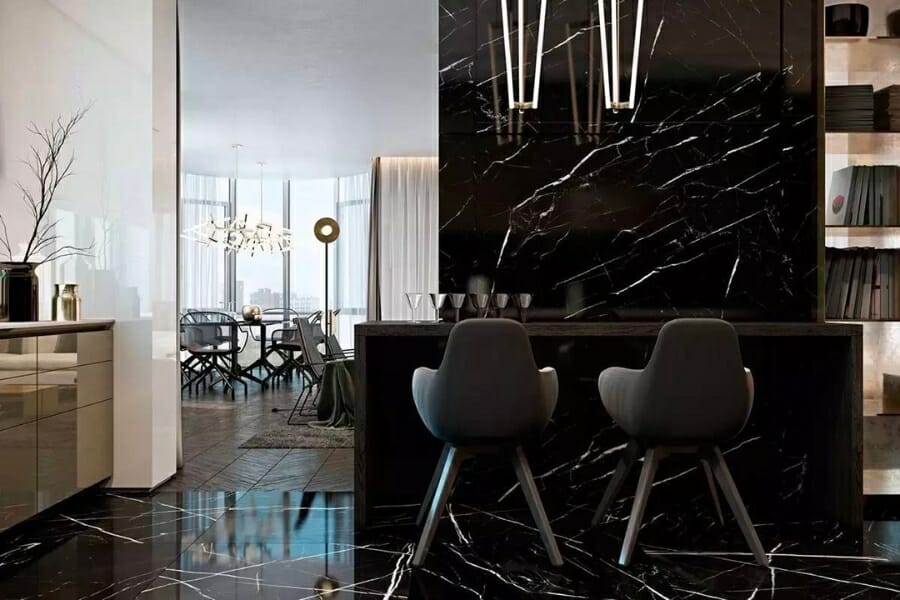
Nero Marquina is a black marble with a distinctive, bold white veining that creates a stark contrast against the deep black background. Quarried primarily in the Basque Country region of Spain, it’s named after the town of Marquina.
This type has been used in a wide range of applications throughout history, including sculpture, architecture, and decorative accents. It’s also often used in high-end residential and commercial applications, where its unique beauty can add a touch of luxury and sophistication to a space.
How much is Nero Marquina worth
Nero Marquina is quite expensive and currently sells at the price of $115 to $172 per square meter.
Statuary
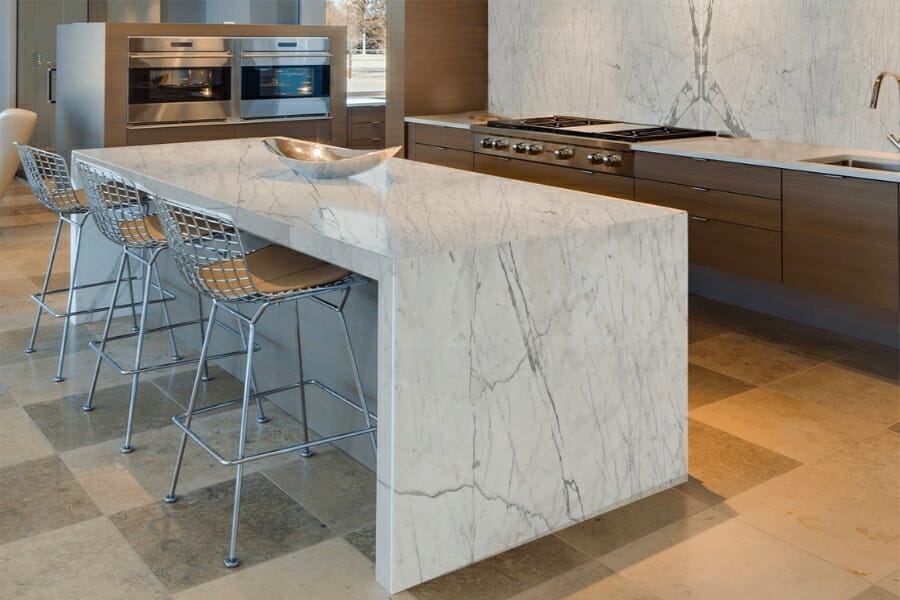
Statuary Marble is known for its pure white color and striking, dramatic veining. Like the Calacatta and Carrara types, Statuary is also quarried primarily in Italy. It’s often used in high-end residential and commercial applications.
Statuary is named after the ancient Roman practice of using it for statues and sculptures, due to its pure white color and the ease with which it could be carved. Today, it’s used in a wide range of applications, and since it’s a versatile material, it can be used in a variety of design styles, from traditional to modern.
How much is Statuary worth
Statuary Marble’s value is also relatively high compared to the other types. Its price ranges from $80 to $225 per square meter.
Why Marble Is So Expensive
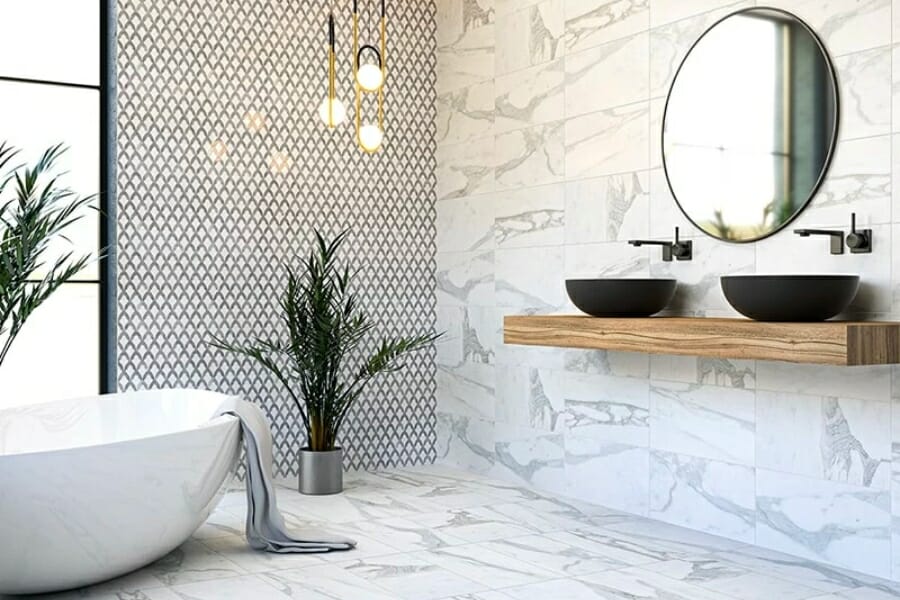
Marble is one of the most beloved materials in the world of design, and it’s no surprise why! Its elegant beauty, timeless style, and incredible durability make it a top choice for high-end residential and commercial applications. But why is Marble so valued, and why does it come with such a hefty price tag? Here’s a closer look!
As we’ve mentioned in passing above, Marble is a natural stone, which means that each slab is completely unique. This makes it an incredibly special and sought-after material for designers who want to create one-of-a-kind spaces that truly stand out. Plus, it’s a luxurious material that has been used for centuries in some of the world’s most beautiful buildings.
Another reason is Marble’s durability. It’s a hard, dense stone that is resistant to heat, scratches, and stains, which makes it a practical choice for high-traffic areas like kitchens and bathrooms, where other materials might not hold up as well over time.
But the most obvious and main reasons of all is because it’s just so beautiful! There’s something about the way that light plays off the surface of Marble that is truly breathtaking. Its subtle veining and natural variations in color create a sense of depth and movement that simply can’t be replicated with any other material.
When you invest in a material as stunning and long-lasting as Marble, you’re not just buying a product— you’re buying a piece of history, a work of art, and a symbol of enduring style and sophistication.
How To Determine The Value Of Marble
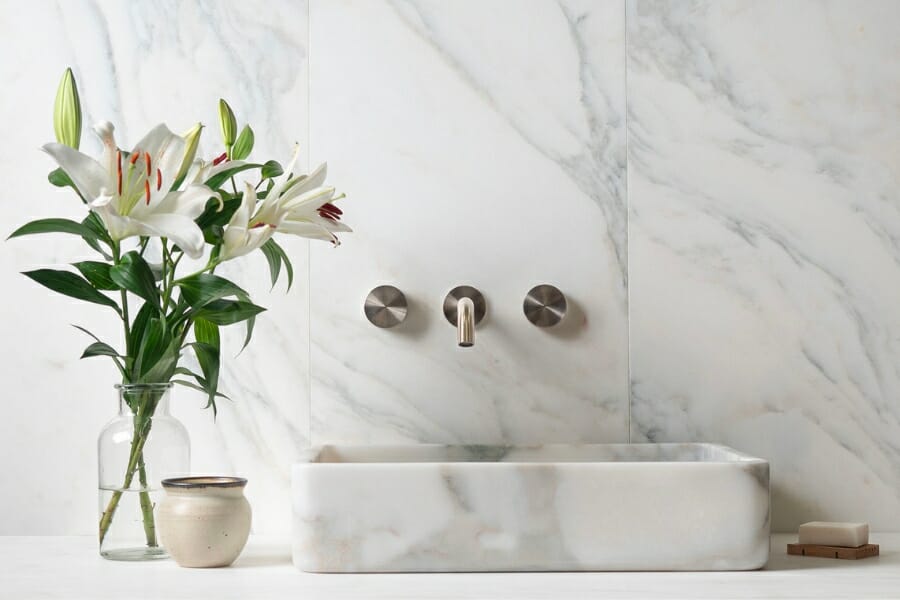
Marble’s value and high price is based on different factors at play, such as the following:
Quality
The quality of a piece of Marble can have a significant impact on its price. In general, the higher the quality is, the more expensive it will be.
One of the factors that can affect its quality is the pattern and consistency of the veining. For example, Marble with consistent, evenly spaced veining is generally considered to be of a higher quality than those with irregular or sporadic veins.
Color
Marble that has a pure white or light-colored base with minimal veining may be more expensive than those with color variations. Rare colors like blue or pink can also be particularly valuable and expensive. Blue Marble, for example, is highly sought after by designers and homeowners for its unique beauty.
Scarcity
The rarer and more difficult it is to obtain a particular type of Marble, the more expensive it will be. For example, Calacatta Marble can only be found in Italy, so it’s more expensive due to its limited availability and cost of transportation.
The difficulty of extracting and processing, cultural and historical significance, and demand for the Marble also add to its scarcity and, in effect, its high price.
Origin
This factor is closely related to scarcity and quality, since the origin of a Marble affects both of those two. Samples that are quarried in specific regions of the world may have unique geological conditions that affect their appearance and durability, which can impact their value.
Additionally, some types may be only found in limited quantities, making them more expensive due to their exclusivity. If the marble is quarried in a location that is difficult to access, it will also influence the price to go up.
Size and Thickness
Larger and thicker Marble pieces are more expensive due to the additional material and labor required to quarry, transport, and fabricate them. For example, a slab of marble that is several inches thick and large enough to cover a kitchen countertop will be more expensive than a smaller, thinner piece that’s only suitable for a smaller surface.
Thicker pieces are also often more preferred for certain applications, such as flooring, due to their durability and ability to withstand wear and tear.
Edging and Surface Finishing
Edging refers to the shaping of the edges of the Marble slab, which can range from a simple straight edge to a more elaborate, decorative edge. The more intricate the edging, the more labor and time it will require, which can increase the cost of the finished product.
Similarly, the surface finishing of the Marble, such as polishing or honing, can impact its price. More time and skill are required to create a polished finish compared to a honed finish, which can make the former more expensive. Certain types of finishes may also be more in demand, such as a leathered or brushed finish.
Application
Marble that is intended for use in high-traffic areas, such as flooring or kitchen countertops, may need to meet specific durability requirements, which can impact its price. Similarly, those intended for use in sculptures or other decorative pieces may need to have a particular color or veining pattern, which can also affect its value.
Trends
As with any other product, Marble can be subject to changing trends in terms of color, finish, and style. When certain types become more popular, their price may increase due to increased demand. Changes in design trends, such as a shift towards more minimalist or natural-looking finishes, also affect the price of certain types of Marble.
Marble Price By Type
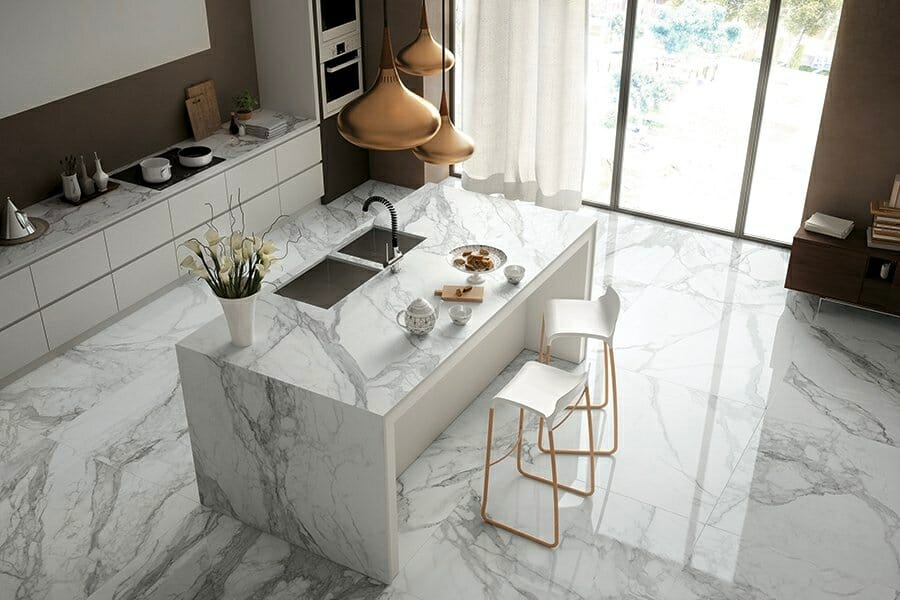
As we’ve discussed above, the different types of Marble have certain characteristics that either make it pricier or more affordable compared to each other. Below are its current market prices:
Marble values by type
| Type | Price (Per Square Meter) |
| Calacatta | $180 – $270 |
| Carrara | $65 – $105 |
| Crema Marfil | $97 – $147 |
| Light Emperador | $93 – $140 |
| Dark Emperador | $113 – $169 |
| Nero Marquina | $115 – $172 |
| Statuary | $80 – $225 |
The Most Expensive Marble
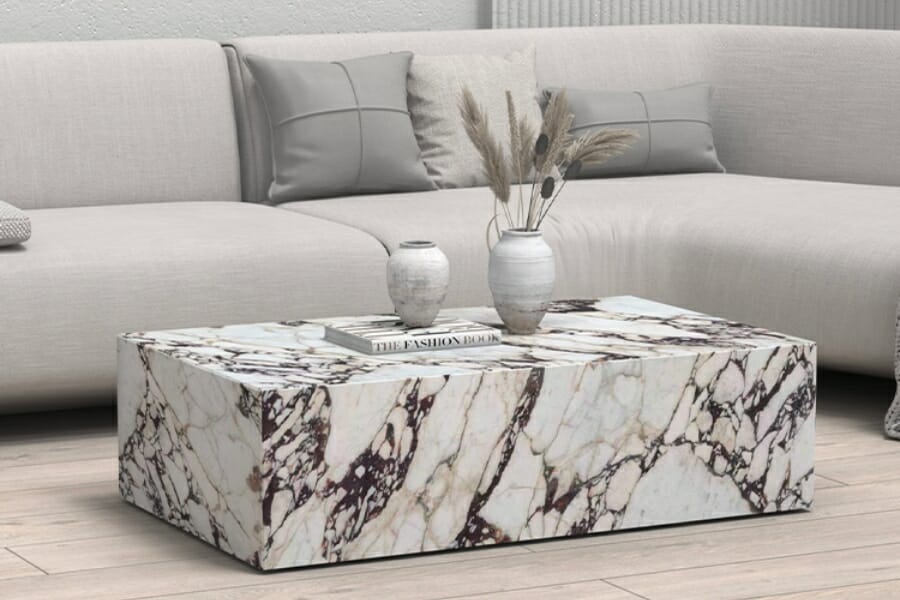
The most expensive marble ever sold is the Calacatta Viola, a rare type that comes from the Carrara region of Italy. The stone was sold in 2019 to an undisclosed buyer for a reported price of over $200,000 per square meter, making it one of the most expensive natural stones ever sold.
The Calacatta Viola is known for its striking purple and white veining, which is highly sought after for luxury interior design projects. Its rarity is one of the main factors that contribute to its high value. This Marble is only found in small quantities in Carrara, and its unique coloring and veining make it highly coveted by collectors and designers alike.
The quality of the Calacatta Viola is also exceptional, with a highly polished surface and uniform texture. While the Calacatta Viola is an extreme example of the high value that can be placed on rare and exceptional Marble, it is a testament to the enduring appeal of this timeless material.
How To Get An Appraisal On Your Marble
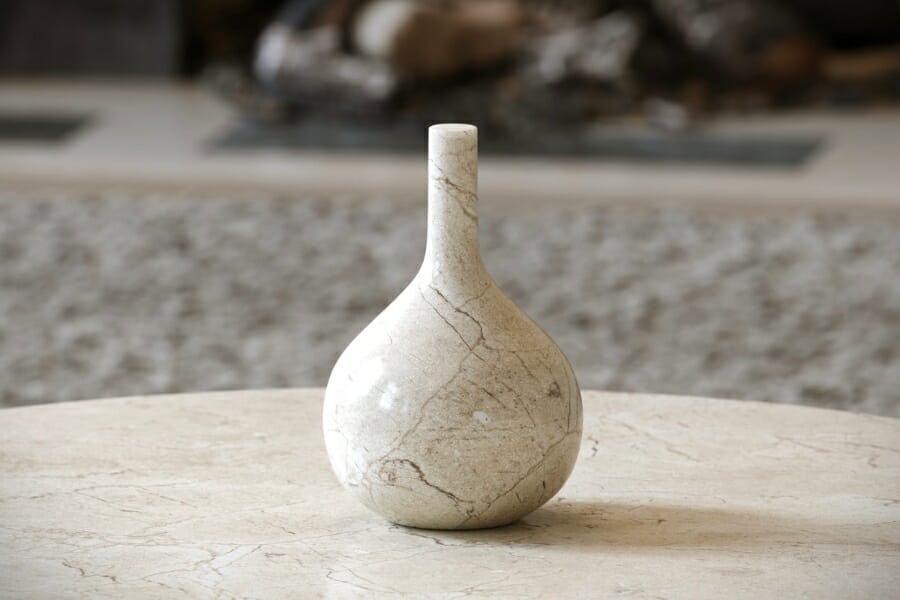
To get an appraisal on Marble, it’s best to consult with a professional appraiser who specializes in natural stone. You can find qualified appraisers through industry associations, such as the National Association of Jewelry Appraisers or the American Society of Appraisers. Some Marble suppliers and fabricators may also offer appraisal services, so it’s worth checking with them as well.
When getting an appraisal, it’s important to provide the appraiser with as much information as possible about the stone, including its origin, type, quality, and any specific characteristics that may affect its value. The appraiser will typically inspect the Marble in person, taking into account factors such as color, veining, texture, and size. They may also consider market trends and demand for that particular type.
After assessing the Marble, the appraiser will provide a written appraisal report that outlines the stone’s value based on current market conditions and other relevant factors. This report can be used for insurance purposes, estate planning, or for buying or selling the stone. It’s important to note that appraisals are typically valid for a certain period of time, so it’s a good idea to have your Marble appraised periodically to ensure that your insurance coverage remains up-to-date and that you have an accurate understanding of its value.

